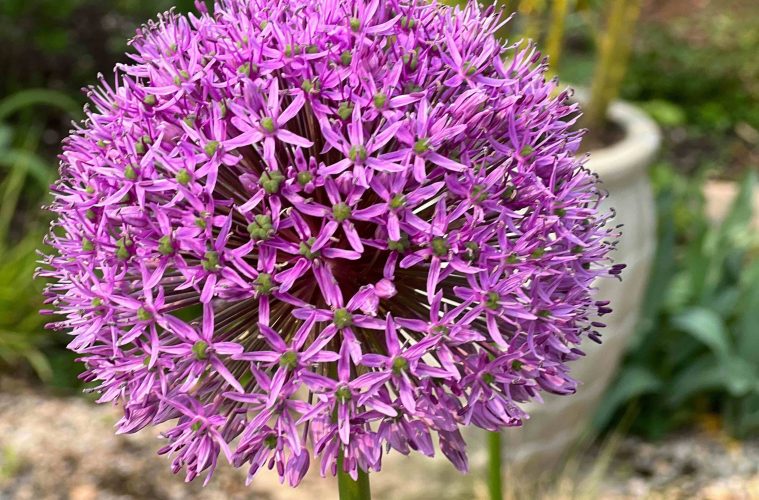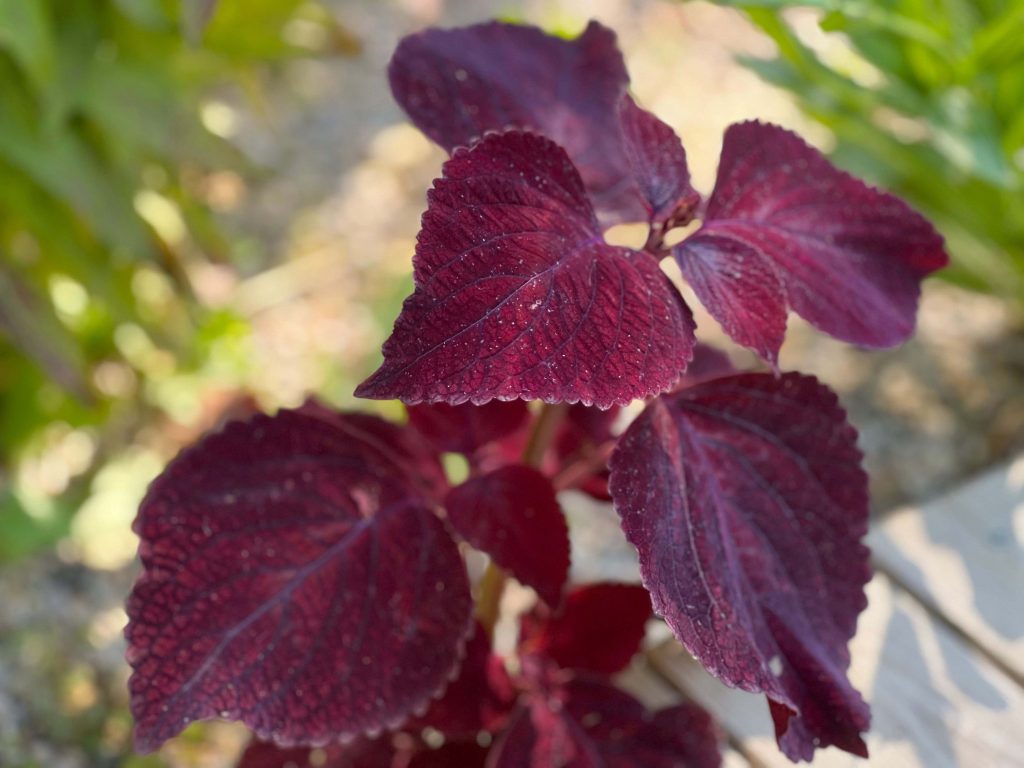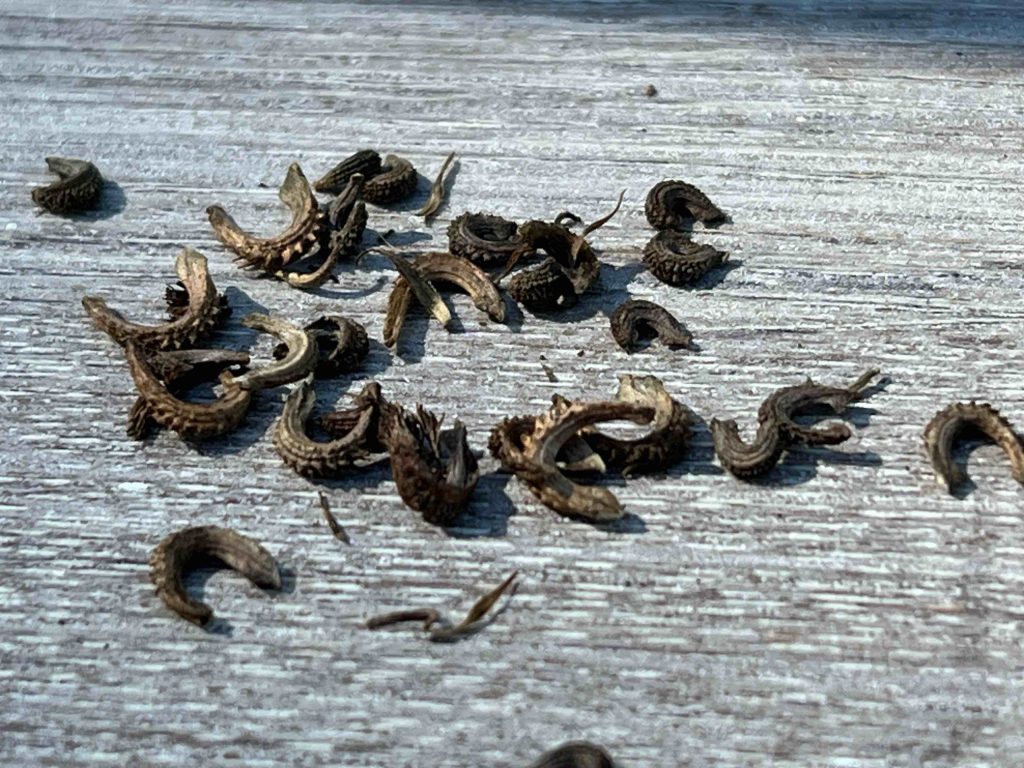Every year around this time, I ask myself what many garden people ask themselves; where did the summer go? Well, it went, and there’s nothing we can do about it. Luckily, we have something just as amazing – the autumnal garden!
Not only is there still life and color, at least until the first killing frost, there is still plenty to accomplish. For me, the fall offers a combination of the retrospection of the spring and summer, mixed in with the prospective preparation and planning for next year’s season.
If you haven’t been doing it all season long, then now is a good time to start keeping a gardening journal. I am actually saying this to myself as much as I am to you. My record of keeping records has been spotty at best. This doesn’t mean that it isn’t good advice though. In fact, every gardening season I apparently will freak out about the same things happening to my plants. My wife will at some point look at me and calmly tell me that I have had these same worries year after year. I don’t know what it is about my brain that won’t let me remember such states of horticultural anxiety. Maybe it’s doing me some sort of favor by letting me forget about my unnecessary spiraling. At any rate, if I were to keep a journal about these issues, then I could easily go back and see that I have nothing to worry about, and I should just find some other issue to spin out of control in my mind.
- Surprise Coleus
- Calendula Seeds (or, little dried bugs)
If you record nothing else about your garden, it should be what worked and what didn’t. This advice mostly pertains to annuals, but you might find it tempting to revisit a perennial that for one reason or another, just will not grow for you. Chances are that you don’t have the right soil type for the particular plant you want, or it could just not like you. Either way, a journal would help sway you from going down the same pointless path year after year.
After you have written down all the highs and lows of your gardening experience for this year, a nice follow up activity is seed collecting. I find a certain satisfaction in saving seeds from my favorite annuals to start up again inside in the spring. It’s also very neighborly to share the wealth and give your friend seeds from your garden. If packaged nicely, these could make for a very thoughtful and inexpensive holiday gift!
When I collect seeds, I like to dry them out for a couple of days on some paper towel or on a paper plate before putting them into little packets to store for the winter. The most important step in this entire process is to LABEL EVERYTHING! Label the surface that you are drying them on, and absolutely label the packet! Although there are some seeds that are very easy to identify, like Calendula seeds, that sort of look like little dried bugs, most just look like every day, ordinary seeds. I had a geology class in college that would have an identification portion of every exam where they would pass around a box of different samples that you would have to match up with their label. I swear that for the first few seconds that I would stare down into that box, I would have an anxiety attack, and all I could think to myself was “THESE ARE ALL JUST ROCKS!” So save yourself a situation like this and label those seeds!
Some plants don’t really need you to collect their seeds, as they readily reseed themselves. I was surprised to find that this year, my above-mentioned Calendula’s started popping up all over the garden without me having to do anything. I also was pleased to see many Coleuses do the same. I welcome these kinds of surprises in my garden, but if you like more control over what goes where, then make sure you collect and germinate them yourself.
I like to do my fall cleanup throughout the season, as to not make too much work for myself all at once. I find that some of my annuals last all the way up to the first killing frost, while others seem to peter out a while before. This year, my Impatiens were wonderful until September, when they decided to start looking scraggly and unappealing. After I was able to collect some seeds from them, it was time to say goodbye. Not everything is going to last until the end, and that’s okay. They can’t all be marathon runners. My Zinnias, on the other hand, are prolific bloomers until the first frost turns them all black and mushy. That’s usually around mid-October, but this year, who knows. After that happens, it’s time to bag them up (or compost them yourself.) I don’t really have the space for compost, so I let the city do it for me. In the spring I go around with a bunch of 5-gallon buckets and collect the city compost from the various piles they leave around. It sort of feels like a co-op situation that way.
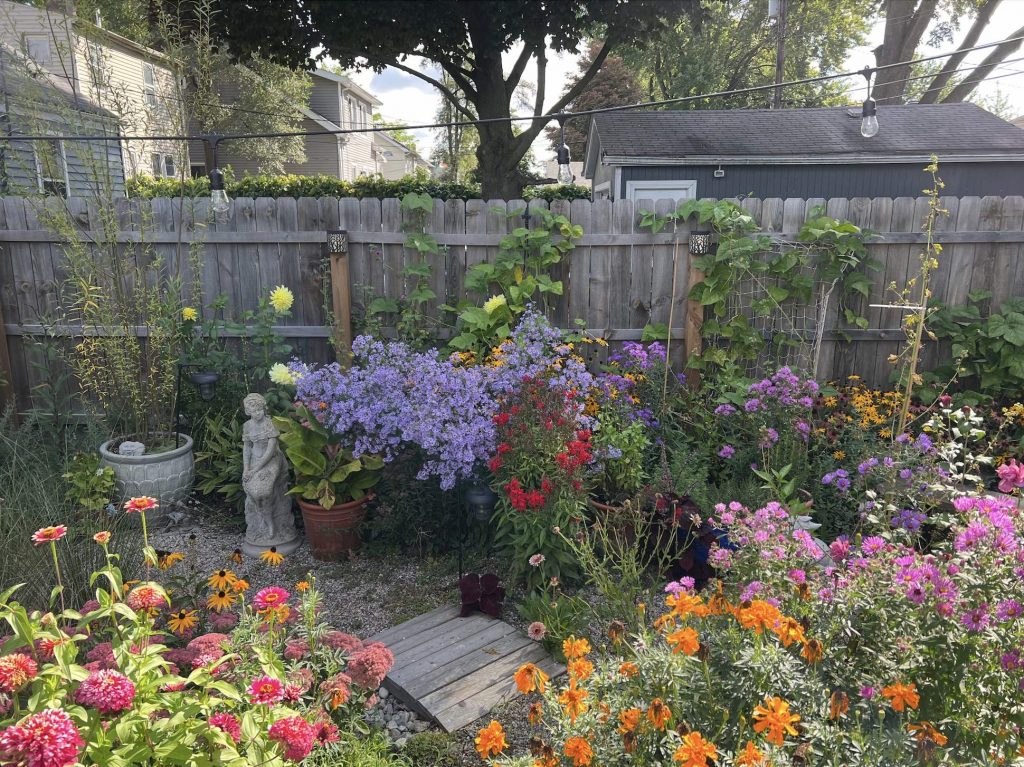
Fall in the Garden | by Jamie dado
As far as perennials go, I cut down any that turn black to the ground and leave anything else for winter interest. It’s easy to tell the difference. It really comes down to an aesthetic decision. The perennials that you leave for the winter will need to be pruned in the late winter or early spring, but that’s a problem for another year.
One of the most fun things to do in the garden this time of year is to plant spring blooming bulbs. Your investment in time and effort now will pay off come spring when you are welcomed with the first color displays of the year. When purchasing bulbs, it’s important to check on bloom times to plan your display. That way you can stretch your enjoyment from early spring all the way till your summer plants need to come out.
If you have deer around, it’s best not to bother with tulips, as they will probably not grow to the point of blooming. Instead, try Daffodils, as the deer, and rabbits tend to leave them alone. Some other wonderful bulbs to plant, whether you have deer or not, are Hyacinth, Allium, and Snow Drops.
Snow Drops get their name because they are some of the first flowers to emerge in the early spring and will often be seen poking through the snow. They are a very welcome sight by the time you have suffered through a long Michigan winter. A true harbinger of spring.
Alliums are some of my favorite spring flowers, especially the giant cultivars such as Globemaster Alliums. They have huge spherical purple blooms sitting atop tall stems that will make you feel as if you are in a Dr. Seuss book come to life. Also, they are quite nice in dried flower arrangements that will last for some time.
Of course, another important thing to do in the fall is dig up your tropical plants like Cannas, Callas, and Elephant Ears to store for the winter. I wrote an article about this last fall so feel free to give it a read if you are interested in keeping those plants going for years. There are many ways of doing it, but my method works well for me, and it probably will work for you as well.
Not only is fall a beautiful time of year in Michigan, but It’s also a beautiful time of year in your garden. I find that although it makes me sad to see everything finishing its cycle for the year, it also makes me appreciate that it is now time for the holidays! Which I quite possibly love as much as gardening.
___________________________________________________________
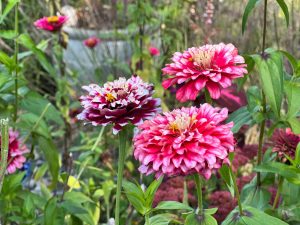
Zinnias
Jamiel Dado is passionate about plants (and garden ornaments) and wants to spread his love of gardening to anyone who will listen.

